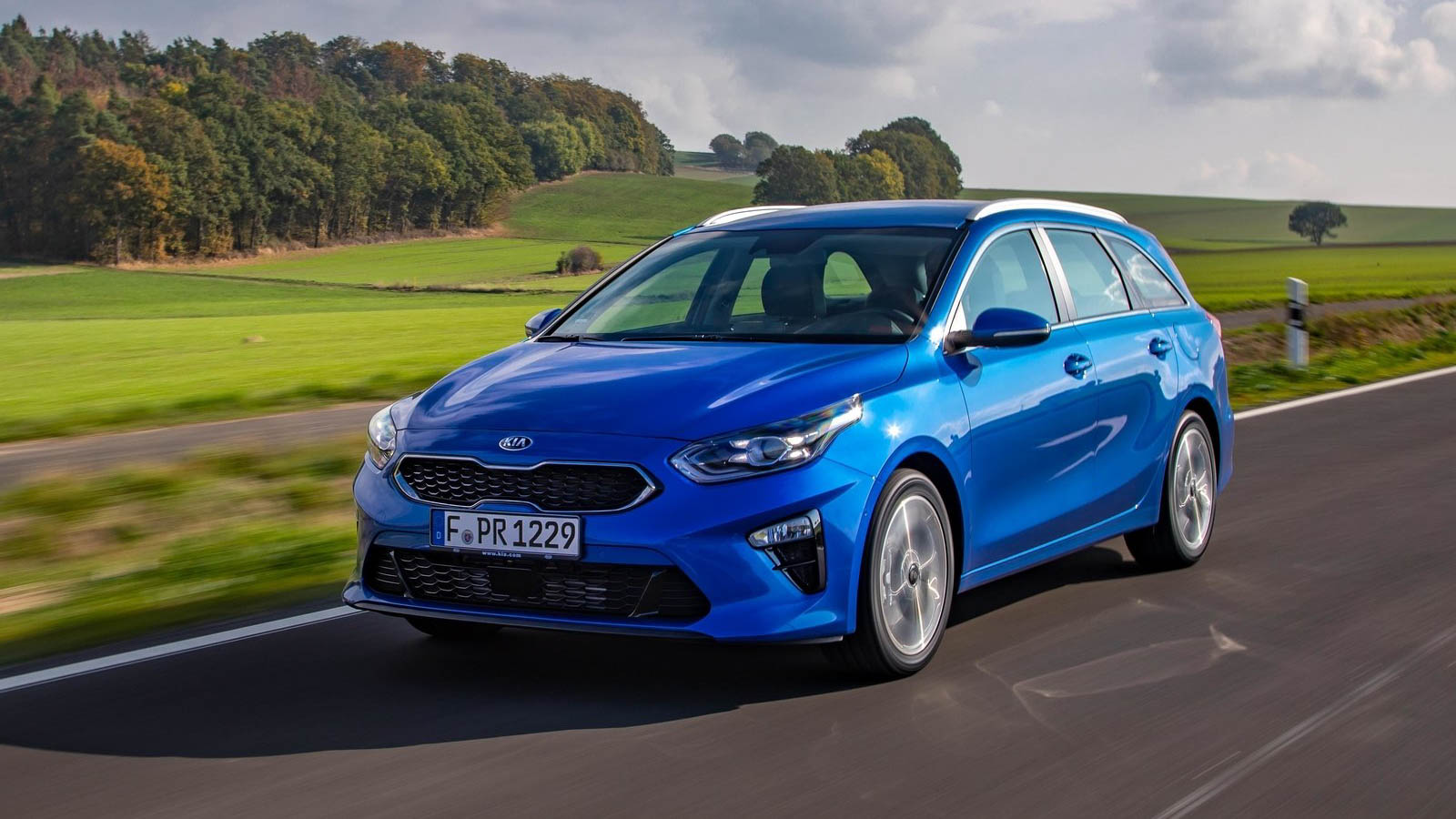When buying a car, it’s easy to get caught up in horsepower figures, design, or fuel economy—but long-term reliability is where the real value lies. For many drivers, especially those shopping in the hatchback segment, low repair rates can be the difference between stress-free ownership and repeated visits to the mechanic.
Fortunately, not all compact cars are built the same. Some hatchbacks go the extra mile—literally—requiring minimal repairs even after years of use. In this article, we spotlight ten hatchbacks that consistently rank at the top for reliability and low repair costs, proving that peace of mind doesn’t have to come at a premium.
1. Toyota Yaris
Known for its bulletproof reliability, the Toyota Yaris has long held a reputation for being one of the most dependable small cars on the road. Its low-cost parts, simple design, and strong reliability track record make it a top contender for budget-conscious drivers.
There’s a new hot-hatch version of the Toyota Yaris, an all-wheel-drive homologation special with limited-slip differentials, a 268-hp turbocharged inline‑three, and a carbon‑fiber roof. Called the GR Yaris (for Gazoo Racing), it’s essentially a street version of the Yaris rally car that competes in the FIA World Rally Championship.
It’s also the latest member of the Forbidden Fruit Club. This limited-production model is not coming to the United States. The 2020 Toyota Yaris Hatchback we do get is new, but it’s not exactly hot. With its naturally aspirated 106-hp 1.5‑liter inline‑four, it’s more room temperature.
This comes as no surprise, as demand for subcompact cars is ice cold in the age of the SUV. Some automakers have abandoned the class altogether. Toyota is still in, but it’s expanding the hedge on its bet.
While the Yaris hatchback sold in other markets is a fresh, in-house design built atop Toyota’s TNGA platform, this U.S. model is a rebadged Mexican-built Mazda 2, which also underpins the Yaris sedan that dates back to 2016, when it was called the Scion iA.
Both body styles share front ends and a 101.2‑inch wheelbase, but the hatchback’s shorter rear overhang has clipped 10.1 inches from its overall length. The resulting proportions and stance look better. Its attractive 16‑inch wheels wrapped with not-too-small 185/60R‑16 Toyo Proxes A27 all‑season tires also help.
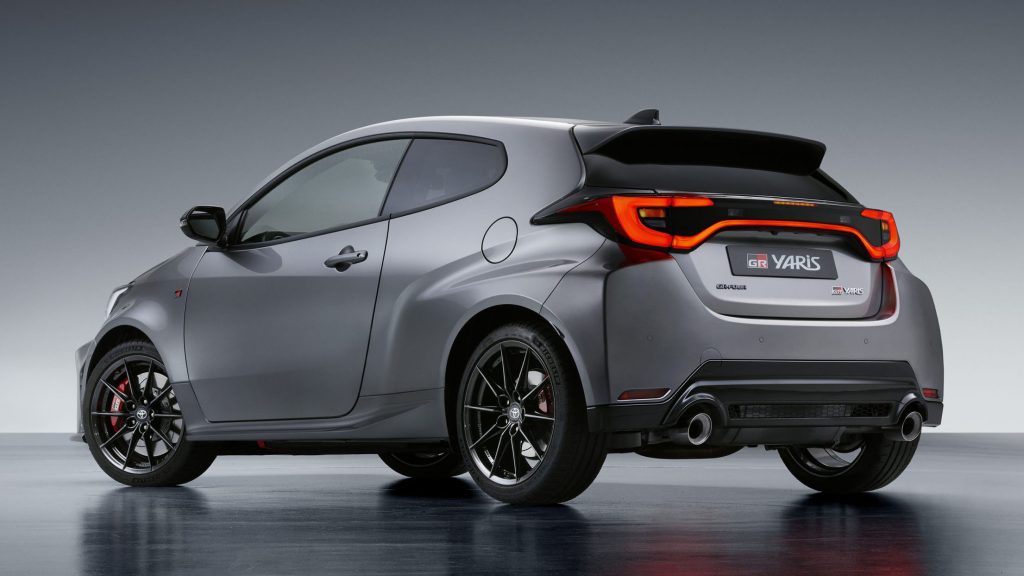
The Yaris hatch’s exterior dimensions are nearly identical to the Honda Fit’s, as is the Toyota’s 16 cubic feet of cargo space, which is three cubes more than in the sedan.
But the Fit’s interior has always been a packaging marvel, one that offers significantly more people space, including nearly five additional inches of rear-seat legroom—a true feat considering the Honda’s wheelbase is about 1.6 inches shorter. This Toyota’s rear seat is tight even for its class, and despite having a 60/40-split rear seatback that folds easily enough, it doesn’t create a flat floor like in the Fit.
This reskinned Mazda fares far better up front. Like the Yaris sedan, the hatchback’s interior closely mimics the cabin of the Mazda CX‑3.
We wish for a center armrest, but it’s an otherwise comfortable, functional, and extremely well‑finished space with blue contrast stitching and a mix of faux carbon-fiber and aluminum‑looking trim. Its small digital tachometer can be hard to see when you’re wearing sunglasses, but we dig the cluster’s center‑mounted speedometer and gear readout.
Toyota offers two trim levels of the Yaris Hatchback, LE and XLE. The base price is $18,705, which is about a grand more than the base Honda Fit. It’s also $2,100 more than the sedan’s entry-level L model and $1,100 more than a Yaris LE sedan.
Keyless entry, push-button start, a tilt‑and‑telescoping steering wheel, Android Auto and Apple CarPlay capability, and a largish 7.0‑inch infotainment screen are standard.
Also Read: 5 Used Cars That Dealers Are Paying Top Dollar For and 5 They Won’t Touch
2. Honda Fit (Jazz in some markets)
The Honda Fit delivers on more than just interior space. Its small engine and proven engineering mean fewer trips to the shop and minimal repair bills when you do go. It’s consistently ranked highly in reliability studies and has one of the lowest ownership costs in its class.
The 2020 Honda Fit could easily be compared to one of those magical clown cars, thanks to its astonishing ability to hold much more than its small size would suggest. Honda’s subcompact hatchback impresses not only with its clever cargo space but also with more passenger room than most people would expect from a vehicle in this class.
Its standout feature is the multi-way folding rear seat, which unlocks remarkable versatility and helps explain why it remains a favorite for drivers who need practical utility in a compact package. While this generation of the Fit lacks some of the lively, fun-to-drive nature found in earlier versions, it still benefits from a very fuel-efficient engine and a smooth, composed ride.
That said, its engine can be buzzy and the interior materials are a reminder of its budget-oriented pricing. Nevertheless, the 2020 Fit continues to be one of the most functional and adaptable small cars available.
For 2020, Honda made no major changes to the Fit lineup. Although a new model debuted at the 2019 Tokyo Auto Show, it was confirmed that this version would not be sold in the U.S., and that Honda would discontinue the Fit in the American market altogether.
The 2020 Fit’s pricing starts at $17,185 and climbs to $21,615 depending on trim and options. The trim levels include the base LX at $17,185, Sport at $18,595, EX at $20,055, and the top-tier EX-L at $21,615.
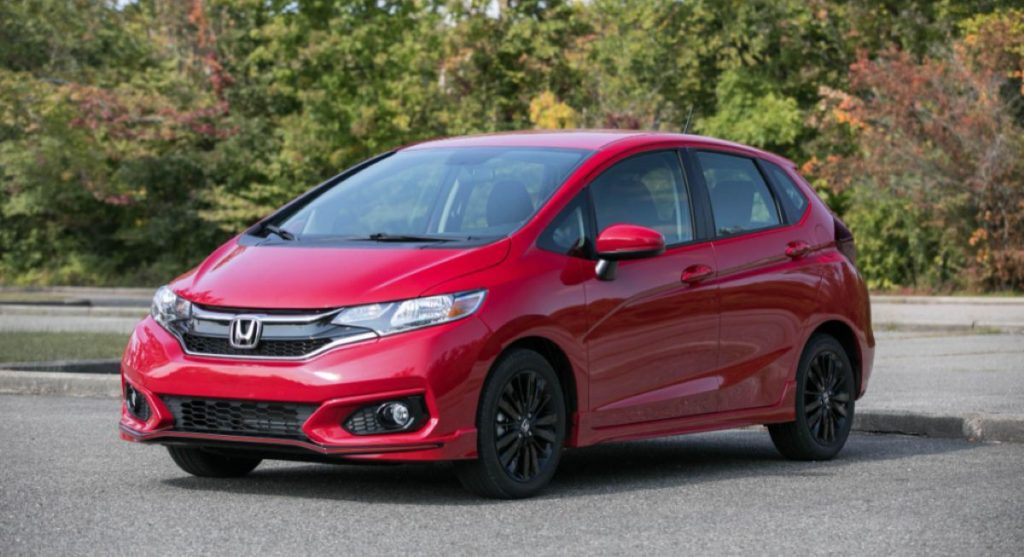
While many Fit buyers are simply looking for an affordable and reliable way to get around, others want a little more than the basics.
The Sport trim stands out as the best value, offering features like a 7.0-inch touchscreen with Apple CarPlay and Android Auto, plus sportier exterior styling. A six-speed manual transmission comes standard, appealing to those who enjoy a more engaged driving experience.
However, opting for the available continuously variable automatic transmission (CVT) is a wise choice for better fuel economy. More importantly, choosing the CVT also gives access to the Honda Sensing package, which includes driver-assistance features like adaptive cruise control, automated emergency braking, and lane-keeping assist.
As for performance, the only real decision for buyers is choosing between the manual and CVT transmissions. It’s worth noting that horsepower drops to 128 when the CVT is selected.
The engine tends to get noisy at higher RPMs, and while the manual allows drivers to better utilize the engine’s power, the CVT saps some of the energy and isn’t particularly satisfying. What does stand out is the Fit’s ride comfort—it handles bumps and road imperfections with surprising poise, especially when equipped with the larger tires found on the LX model.
However, that comfortable ride doesn’t translate into dynamic handling. The soft suspension results in noticeable body roll during cornering, and the steering lacks feedback and precision, especially when compared to the previous generation. While the Fit is undoubtedly competent, it’s no longer the fun, nimble subcompact it once was.
3. Mazda 3
The Mazda 3 is often praised for driving enjoyment, but it’s also surprisingly reliable. Owners report fewer issues than with many competitors, and the car’s robust drivetrain makes it a smart choice for those looking to avoid costly repairs.
There’s plenty of quirkiness to be found in Japan: toilet seats that sing to you, sushi delivered on a model train – and the Mazda 3 Hatchback. You see, the Mazda 3 approaches things a bit differently compared to other cars in its class.
First off, its appearance sets it apart. Mazda has designed this five-door family car with smoothly contoured surfaces and a sloping roofline that tapers neatly into the rear screen, giving it a sleek and stylish silhouette.
For those interested in a more traditional shape, there’s also a saloon version (see our Mazda 3 Saloon review), which positions the model range closer to the executive car segment. Regardless of the body style, the Mazda 3 feels worlds apart from the more angular and practical designs of competitors like the Skoda Octavia.
Further evidence of Mazda’s unconventional approach lies in its engine offerings. While the Ford Focus and Volkswagen Golf have embraced smaller, turbocharged powerplants, the Mazda 3 sticks with larger, naturally aspirated petrol engines enhanced with mild-hybrid technology. It’s a bold move in an era dominated by downsizing and forced induction.
While the Mazda 3 may not be as overtly sporty or spacious as some of its rivals, it certainly isn’t short on merits. The car comes impressively well-equipped, its infotainment system is intuitive and polished, and the interior quality is exceptional—far above what you’d typically expect at this price point.
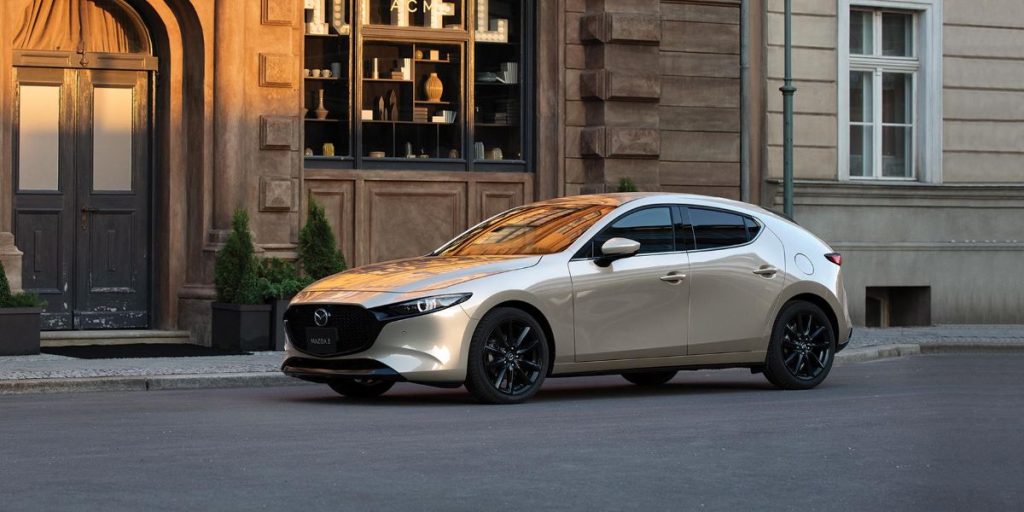
Speaking of which, the Mazda 3 is also competitively priced. The newly introduced entry-level e-Skyactiv G engine is another highlight, delivering smooth, consistent performance that complements the car’s refined demeanor. Among its top qualities are its reasonable pricing, quiet and composed cruising abilities, and a plush, well-built interior.
Of course, not everything is perfect. The handling is decent but lacks the sharpness of some rivals, the rear seats are on the tight side, and Mazda’s reliability record leaves room for improvement. Still, with prices starting at £22,490 or from £215 per month on lease deals, the Mazda 3 remains a strong contender in the segment.
Our recommended version is the Mazda 3 2.5 e-Skyactiv G MHEV [140] Centre-Line 5dr, which starts at £24,730. It offers a good balance of equipment and performance.
When it comes to driving experience, the Mazda 3 continues to play to its strengths. It feels refined on the road, the manual gearbox is a standout with its crisp and engaging action, and the ride remains controlled even over less-than-perfect surfaces.
4. Hyundai i30
In markets where it’s sold, the Hyundai i30 (closely related to the Elantra GT in North America) is a quiet achiever. It features solid build quality and low repair rates, thanks in part to Hyundai’s continued improvements in quality control and drivetrain reliability.
What do vanilla ice cream, chicken nuggets, and the Hyundai i30 have in common? The answer is that all three are known for being safe and inoffensive choices. At least, that’s what we’ve come to expect since the first-generation i30 went on sale, but times are-a-changing.
Now in its third generation, the Hyundai i30 has been revamped to better compete with strong rivals like the Ford Focus, Seat Leon, Skoda Octavia, and Volkswagen Golf. This latest iteration includes updates such as mild hybrid technology across the engine range to help boost fuel economy and lower emissions, along with an improved infotainment system that keeps it competitive in a tech-driven market.
Importantly, the i30 isn’t just a one-size-fits-all proposition. While this review focuses on the five-door hatchback, buyers can also opt for the Fastback or Tourer estate variants.
And let’s not forget the i30N hot hatch, which is known for being a blast to drive. That high-performance variant has even inspired the creation of the N Line trim for the standard i30, offering some of the style and attitude of the N model without incurring the higher running costs typically associated with performance hatchbacks.
Every i30 comes backed by Hyundai’s solid five-year, unlimited-mileage warranty—a standout in this segment—and the brand has a strong reputation for providing generous equipment levels even in the base trims.
So, with all these considerations, the question becomes: is the Hyundai i30 still the safe, sensible, and above all, wise choice for your next family car, or does it make more sense to explore one of its many rivals?
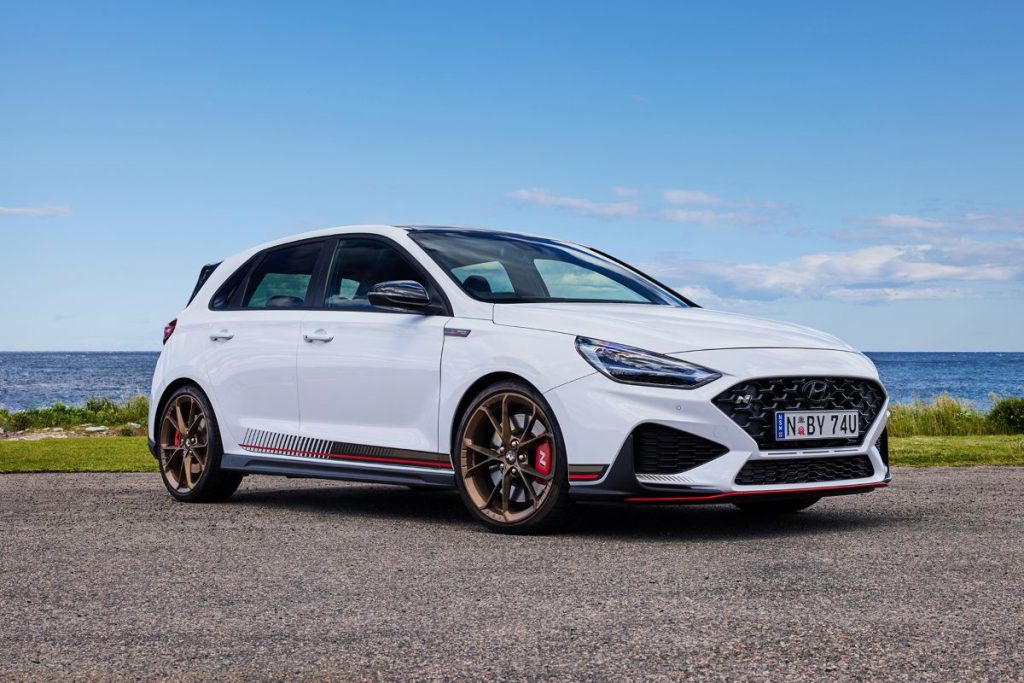
Read on to find out, as we delve into how the i30 performs on the road, what the cabin experience is like, and which trims offer the best value. And if, by the end of this, the i30 seems like your next car, be sure to check out our New Car Buying service to see how much you could save—no awkward haggling required.
The Hyundai i30 offers a comfortable ride and could be a worthwhile pick if you land a great deal. However, if you’re paying full price, it can feel a bit underwhelming in key areas such as interior space and safety. Compared to newer alternatives like the Seat Leon, the i30 isn’t as engaging to drive and feels somewhat average overall.
On the plus side, it delivers a cushioned ride, features a solid infotainment setup—especially in higher trims—and comes reasonably well equipped. On the downside, the base engine delivers lackluster performance, and both fuel economy and CO2 emissions are unremarkable. Handling, too, is uninspiring and leaves little impression compared to sharper-driving rivals.
Also Read: 10 Cars With Best Dash Designs That Bring Innovation
5. Kia Ceed
Sharing a platform with the Hyundai i30, the Kia Ceed is another hatchback that shines when it comes to low maintenance costs. With extended warranties and modern design, it’s a favorite for value-focused buyers.
It’s fair to say that those in the market for a family car have an abundance of options these days—so what exactly helps the Kia Ceed distinguish itself from the crowd?
For starters, it emphasizes the fundamentals, offering a generous warranty, competitive pricing, and a wealth of standard features. On paper, at least, this gives it a strong case right out of the gate, appearing to tick all the essential boxes for family car buyers.
Kia also provides a variety of body styles to suit different tastes and needs. For those prioritizing practicality, there’s the Kia Ceed Sportswagon estate. If you lean more toward stylish design, the sleek and eye-catching Kia ProCeed—also an estate—may appeal more. And if you’re after something with a slightly rugged, off-road flavor, there’s the lifted Kia XCeed crossover to consider.
This review, however, is focused specifically on the hatchback version. While the Ceed looks like a solid all-rounder, it’s entering a segment filled with highly capable competition.
So, does the Kia Ceed have the ability to stand up to top-tier family cars like the Ford Focus, Seat Leon, and Vauxhall Astra? Keep reading to find out.
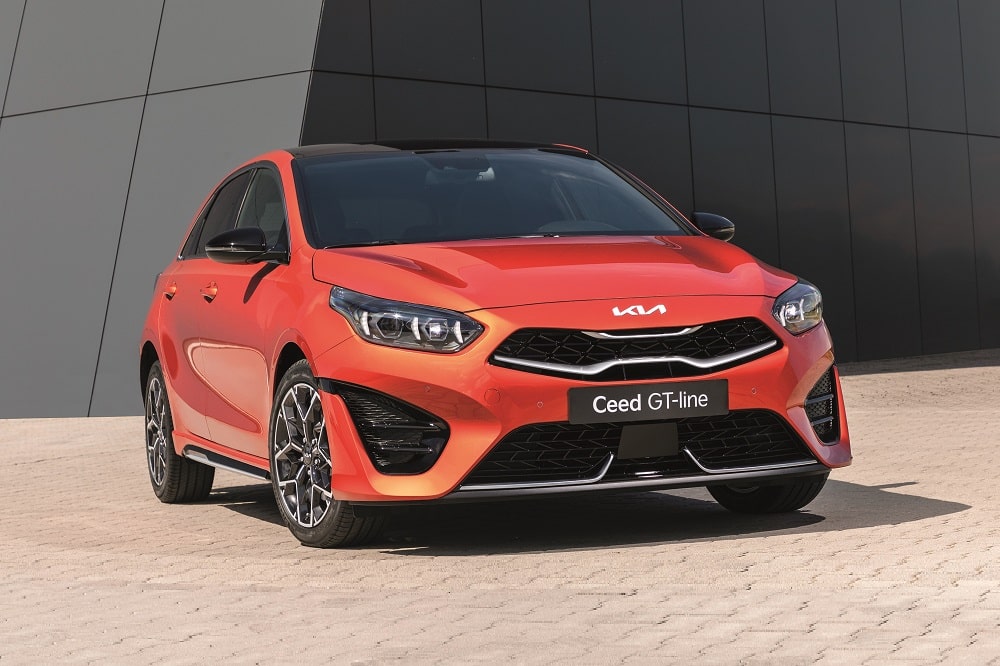
The Kia Ceed is a strong contender in many respects, yet it struggles to outshine its rivals in any one area. The Ford Focus offers a more engaging driving experience, the Skoda Octavia and Scala surpass it in practicality, and the Volkswagen Golf sets the benchmark for ride comfort. If you do decide on the Ceed, the entry-level 2 trim is where you’ll likely find the best value.
Strengths of the Ceed include good value at the base level, a class-leading warranty, and a boot that’s usefully sized. On the flip side, rear seat space isn’t particularly generous, fuel efficiency lags behind competitors, and the ride can feel unsettled on rougher surfaces.
New car prices start from £23,325, with leasing deals beginning around £232 per month. Depending on the trim and options, list prices can vary slightly, but you’ll typically find models available from around £23,495.
When it comes to performance and driving experience, the Ceed holds its own in several areas. It features a strong engine, a satisfying manual gearbox, and offers a generally comfortable drive. However, it doesn’t match the overall refinement of some competitors, and the Ford Focus remains more enjoyable to drive.
The only engine on offer in the current Ceed lineup is the 1.5 T-GDi ISG. Producing 158bhp, it delivers sufficient punch for daily driving once it’s in its stride, though it can feel a bit flat at lower revs. With a manual gearbox, it’s officially capable of reaching 0-60mph in 8.4 seconds. The automatic version completes the same sprint in 8.6 seconds.
6. Volkswagen Golf
While VW has had its ups and downs with reliability, the Golf—especially the Mk7 generation—has proven to be one of the better-built German hatchbacks. With regular maintenance, it avoids many of the more costly issues associated with other European models.
The Volkswagen Golf GTI delivers a rare blend of performance and refinement at a price that remains relatively accessible. As a mainstay in the hot hatchback segment for nearly fifty years, it has only solidified its reputation over time as the perfect mix of driving excitement and everyday usability.
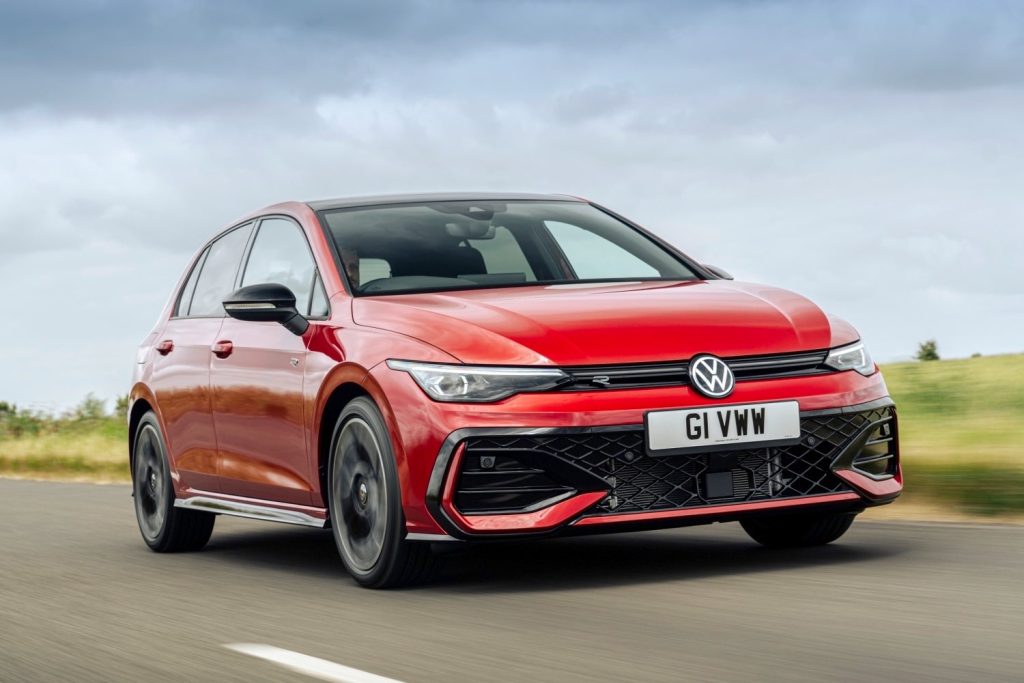
Power comes from a 241-horsepower turbocharged 2.0-liter inline-four engine, sending drive to the front wheels and offering lively acceleration. Although the manual transmission is no longer available, the GTI remains a thrill to drive thanks to its responsive seven-speed dual-clutch automatic gearbox.
This car continues to master the very formula it helped pioneer—an engaging experience on winding roads combined with a practical hatchback design and spacious seating for five—executed with precision and consistency.
7. Ford Fiesta
The Fiesta might be a budget car, but its maintenance costs are surprisingly low. The naturally aspirated variants, in particular, are known for fewer mechanical issues, making them a solid choice for urban commuters.
While the Ford Fiesta may be small in size, it certainly packs a punch. Ford has confirmed that 2019 will mark the final year for the Fiesta in North America, a decision driven by the company’s shift toward a truck- and SUV-focused lineup.
If you’re interested in this practical, value-oriented, and capable subcompact, you’ll need to move quickly—production is set to wrap up in May 2019. Buyers can choose between a sedan and a hatchback body style.
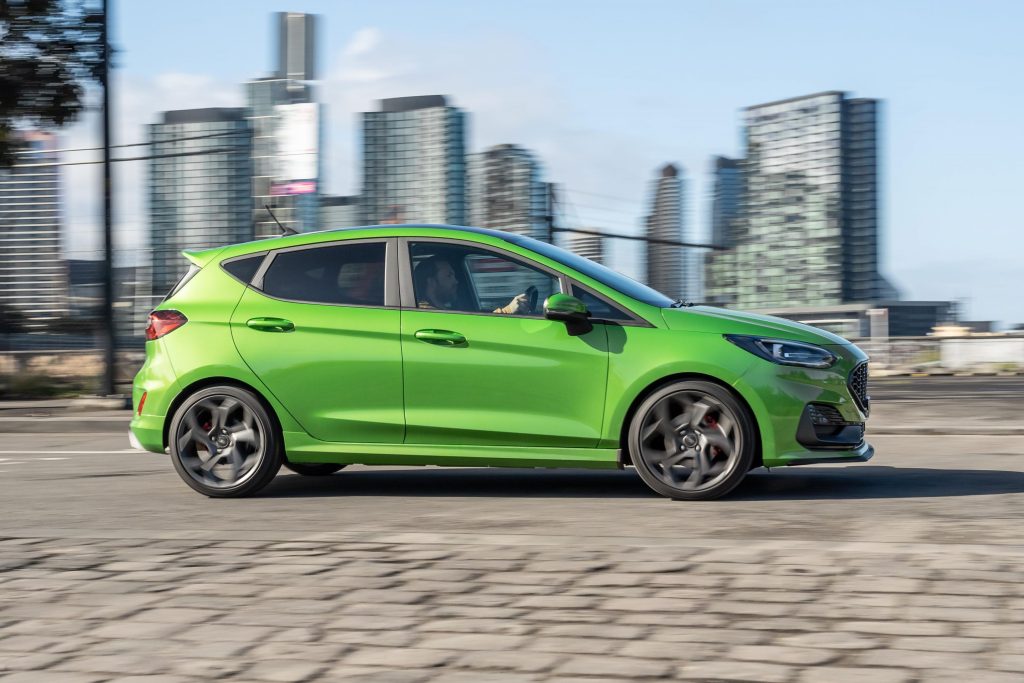
A lively five-speed manual transmission comes standard, paired with a 1.6-liter four-cylinder engine that produces 120 horsepower. There’s also an optional six-speed automatic transmission, which, while not quite as engaging as the manual, still offers a fun driving experience.
The steering is sharp and nicely weighted, making the Fiesta enjoyable through the corners, even if it’s not especially fast—the last model tested took 9.1 seconds to hit 60 mph. For those seeking even more excitement, performance enthusiasts should look into the high-powered Fiesta ST, which is reviewed separately.
8. Suzuki Swift
Simple engineering and a lightweight build mean the Suzuki Swift rarely experiences major mechanical failures. It’s easy to repair and doesn’t rely on complex systems that tend to go wrong in other vehicles.
The Suzuki Swift occupies a space between more budget-conscious options like the slightly larger Dacia Sandero and the more compact Toyota Aygo X. It’s not entirely focused on being the cheapest car in its segment, but it does sit firmly at the value end of the market, especially considering the amount of standard equipment it comes with.
Another unique feature is its availability with four-wheel drive—an unusual trait for a small petrol-powered hatchback in the UK. This Allgrip option adds appeal for buyers seeking extra traction without jumping to a full SUV. However, it does raise the price and doesn’t exactly turn the Swift into an off-road contender like the Land Rover Defender.

So how does the Suzuki Swift compare to standout small cars like the Renault Clio and Volkswagen Polo, as well as value-centric models such as the MG3 and Aygo X? Let’s take a closer look. There are certainly larger and more comfortable small cars, but the Swift stands out with its excellent fuel economy, nimble handling, and generous equipment list.
If you’re considering one, we recommend the regular front-wheel-drive (2WD) version paired with a manual gearbox in entry-level Motion trim. On the plus side, the Swift delivers outstanding fuel economy, tidy handling, and lots of kit as standard. On the downside, it suffers from a firm ride, noticeable road noise, and rivals that offer better practicality.
New car deals start at £16,308 with estimated monthly payments from £238, while leasing options begin at £194 per month. On the road, the Swift’s performance and quietness are respectable for the class. It handles sharply, the manual gearshift is pleasant to use, and the engine is smooth.
However, the ride can feel unsettled, it isn’t the quietest car in its class, and its acceleration is modest. While the Swift carries over its predecessor’s platform, it introduces a new 1.2-litre three-cylinder petrol engine with mild-hybrid technology. This non-turbocharged unit produces 81bhp—not much on paper, but the Swift’s light weight ensures performance is livelier than expected.
9. Skoda Fabia
Benefiting from VW Group engineering while keeping things simple, the Skoda Fabia is often less problematic than its more premium relatives. Owners frequently report low repair costs and good durability across many model years.
The fourth-generation Skoda Fabia is a supermini that holds the title of being the smallest and most affordable model in the Skoda lineup. Skoda takes pride in having sold over 4.5 million Fabias since the model first launched in 1999.
That original version played a crucial role in transforming public perception of the brand, establishing Skoda as a serious and capable manufacturer after years of ridicule and skepticism directed at the Czech company.
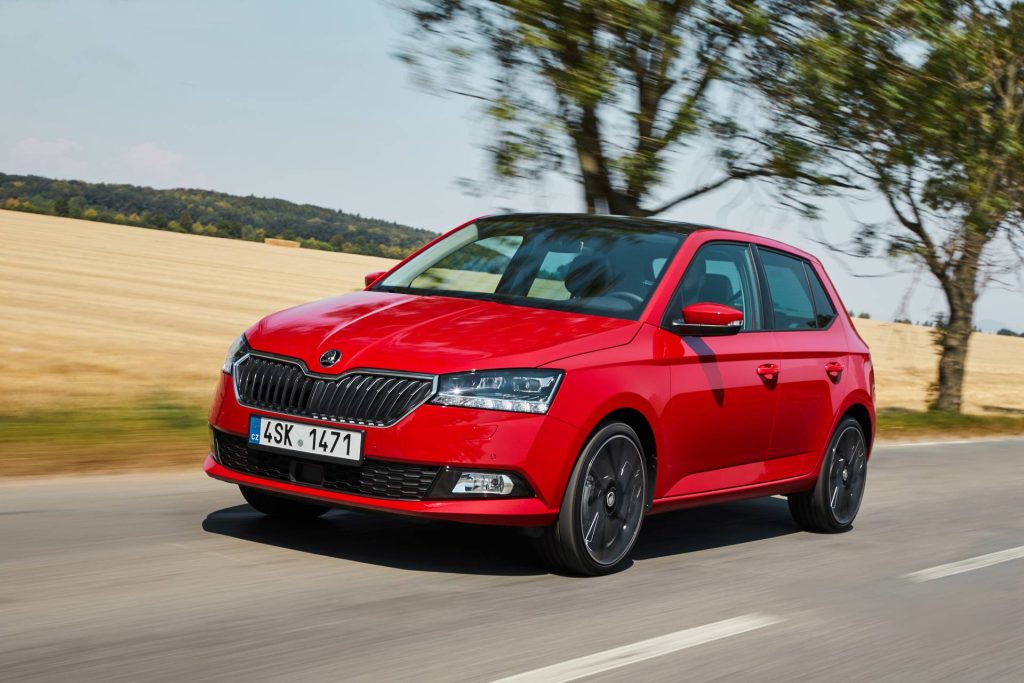
Now that the Citigo has been discontinued, the responsibility of introducing new buyers to the Skoda brand falls to the Fabia. Amidst the proliferation of oversized SUVs on today’s roads, the Fabia appears more compact than ever—even though this latest iteration has exceeded four metres in length for the first time.
If you’re looking for evidence that all types of cars have grown over the past two decades, consider this: the latest Fabia boasts a 2.56-metre wheelbase, which is actually longer than that of the original 1996 Octavia.
10. Toyota Corolla Hatchback
Toyota’s legendary reliability translates perfectly into the Corolla hatchback. With an efficient powertrain and high-quality components, this hatchback is among the least likely to rack up repair bills over time.
The Corolla Hatchback has built a strong reputation for delivering a combination of sportiness, dependability, and everyday practicality—all at a price that remains within reach for many drivers.
Toyota launched the current fourth-generation Corolla Hatchback for the 2019 model year, while earlier generations were produced from 1975 to 1981, 1982 to 1983, and 1984 to 1988. In comparison, Toyota debuted its first Corolla sedan (non-hatchback) back in 1966. If you’re looking to stay ahead of the curve, here’s what you need to know about the new 2025 Corolla Hatchback.
For 2025, Toyota’s Corolla Hatchback is offered in three trim levels, with the base model priced from $23,630. A notable addition for this model year is the introduction of the Corolla FX—an appearance package that includes several blacked-out exterior features and a rear spoiler.
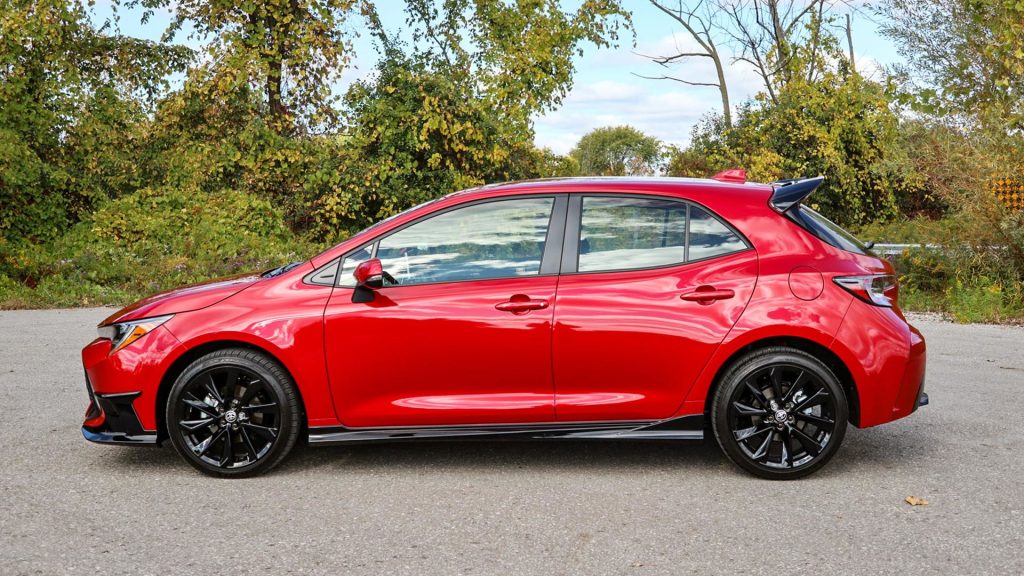
According to Toyota, the FX’s styling pays homage to the “1980s Corolla FX16 Hatchback.” However, it is important to note that the FX package focuses solely on looks and does not include the “performance upgrades of its 1980s counterpart.”
Drivers of the 2025 Corolla FX Hatchback will experience a sportier presence, featuring a lower ride height, more responsive steering, and 18-inch satin-black alloy wheels with machined accents.
The exterior is further enhanced by a black roof, badging, and side mirror caps. Inside, the FX includes a new 10.5-inch infotainment display, which is also available as an option on other trims. When it comes to rivals, the 2025 Corolla Hatchback competes directly with the Honda Civic Hatchback, Mazda3 Hatchback, Subaru Impreza Hatchback, and Volkswagen Golf GTI.
Choosing a hatchback doesn’t have to mean compromising on reliability. The ten models listed above stand out not just for their performance and practicality, but also for how little they cost to keep on the road. Whether you’re looking for a daily commuter or a long-term family car, these hatchbacks will give you peace of mind and help keep repair bills in check.

